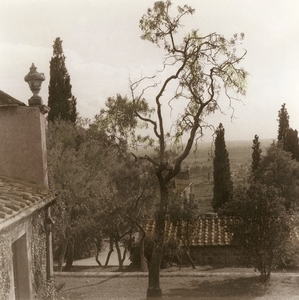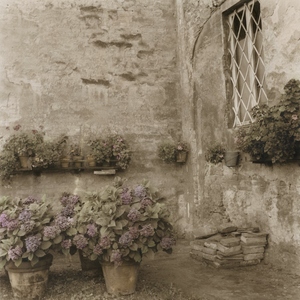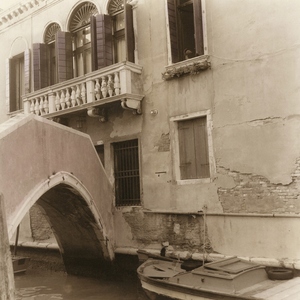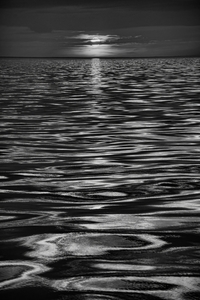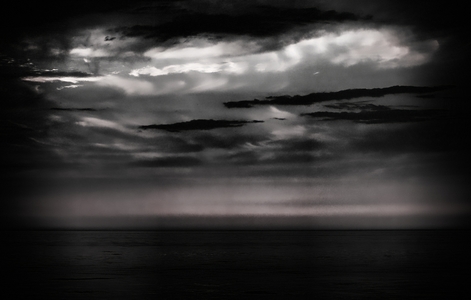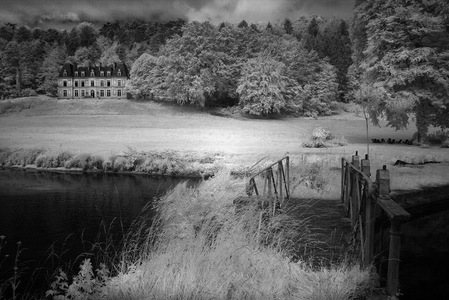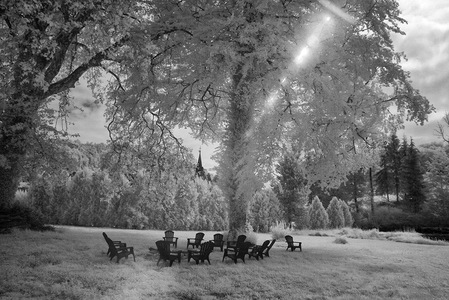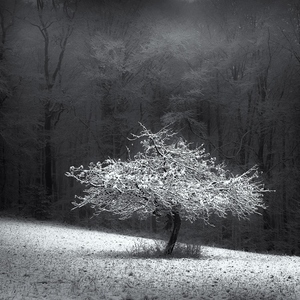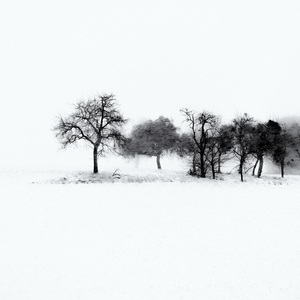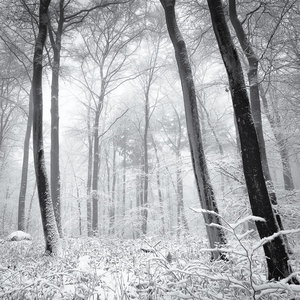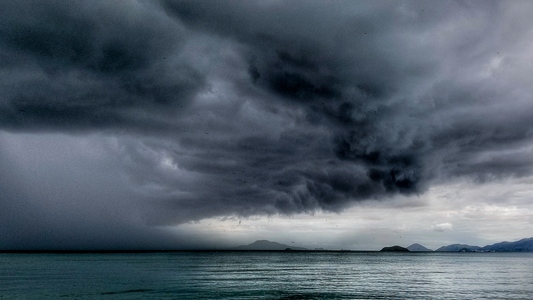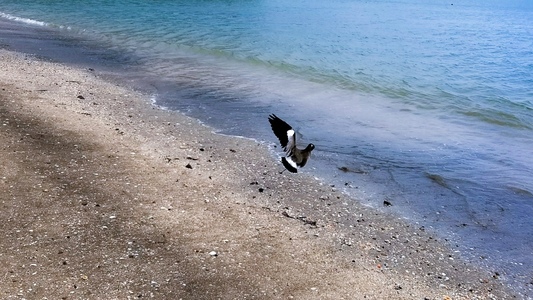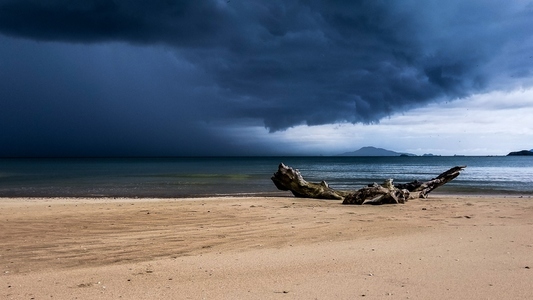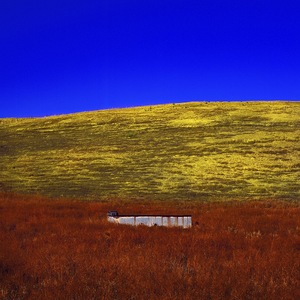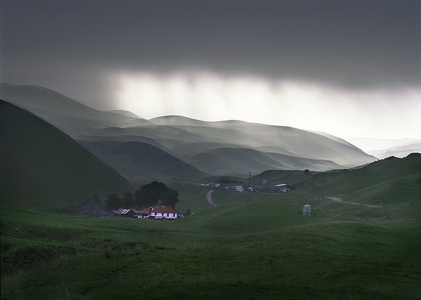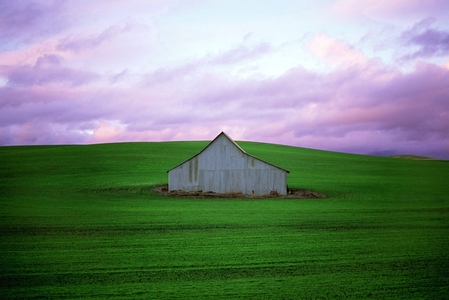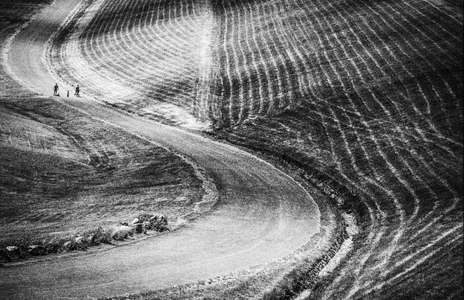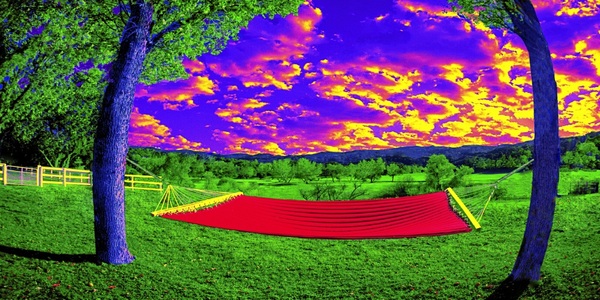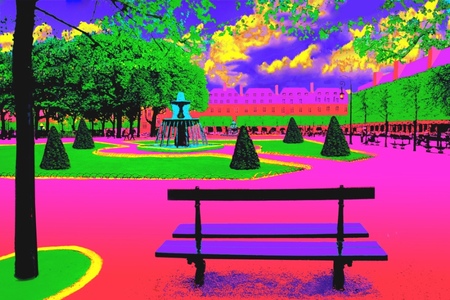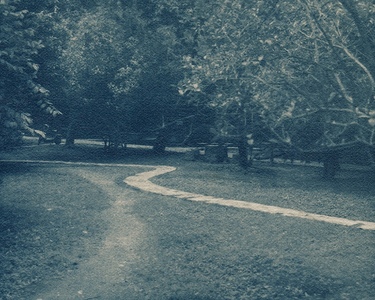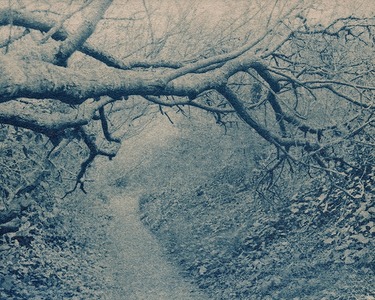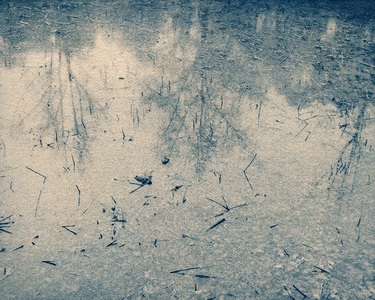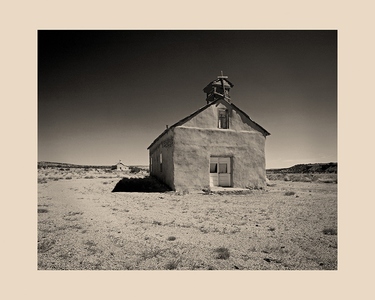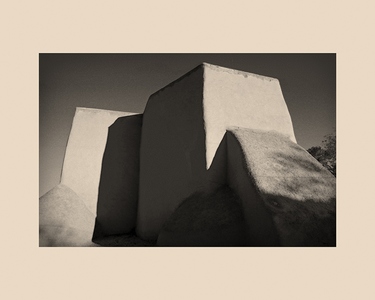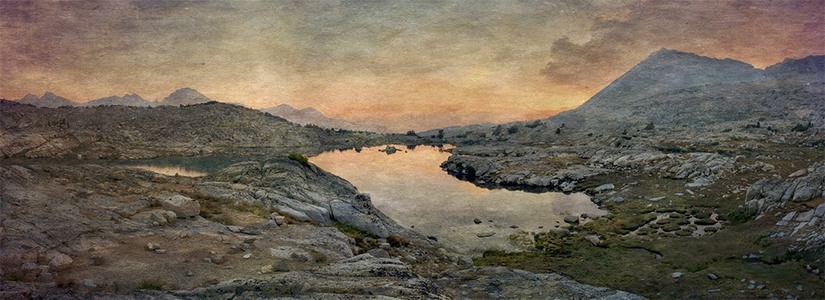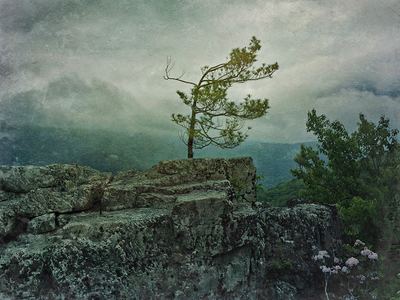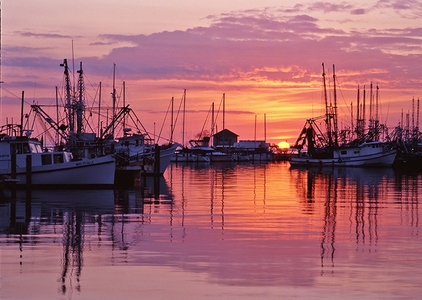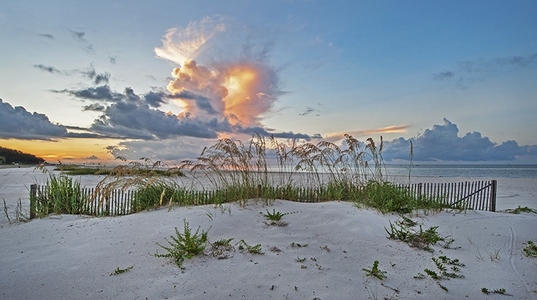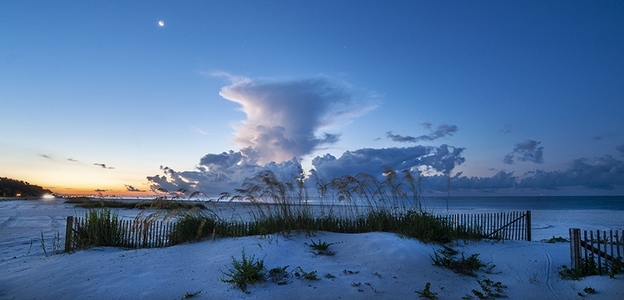OUR DRAMATIC LANDSCAPE-Curator Michael Kirchoff > EXHIBITION #2
EXHIBITION #2
II FALCONERE by Eva Weiss
(Click on image for larger view)
(Click on image for larger view)
Eva Weiss says, "The work represented in this entry are portraits. Portraits of Places is a body of work I will always be working on. As I consider myself to be primarily a portraitist, I approach my landscapes in the same manner. I want to describe a place in the same way I would a face or a character. It’s a portrait. A portrait of place."
Eva Weiss is an internationally exhibited and published fine art photographer. Her original images have often been
described as classical, theatrical, and dreamlike.
Eva grew up in Philadelphia and received her BFA from Rochester Institute of Technology in 1971.
Eva's work has been exhibited and published internationally since 1972. She received a Creative Arts Program Services
Grant in 1976. Her creative collaboration with Split Britches performance troupe - Peggy Shaw - Lois Weaver - Deb
Margolin- has been exhibited extensively in NYC, Amsterdam, and London. 1984- 2015
Eva has been photographing the Gay and Lesbian community for over thirty years. Creating a body of work that focuses on
performance artists on the Lower East Side of Manhattan. Lois Weaver - Peggy Shaw - Holly Hughes - Carmelita
Tropicana - David Cale- Lisa Kron-Deb Margolin. This work has appeared on three book covers Butch/Femme 1995.
Intimate Acts 1997. And Must 2008. A complete body of her work on Lois Weaver - including the back and front cover -
appears in the definitive book on the artist.
The Only Way Home is Through the Show. It includes images from a thirty five year photographic collaboration with performance artist, writer, and director Lois Weaver.
The Museum of The City of New York features four of Ms. Weiss’s images of W.O.W performers at the exhibit Gay
Gotham. 2017.
evaweissphotography.com
Eva Weiss is an internationally exhibited and published fine art photographer. Her original images have often been
described as classical, theatrical, and dreamlike.
Eva grew up in Philadelphia and received her BFA from Rochester Institute of Technology in 1971.
Eva's work has been exhibited and published internationally since 1972. She received a Creative Arts Program Services
Grant in 1976. Her creative collaboration with Split Britches performance troupe - Peggy Shaw - Lois Weaver - Deb
Margolin- has been exhibited extensively in NYC, Amsterdam, and London. 1984- 2015
Eva has been photographing the Gay and Lesbian community for over thirty years. Creating a body of work that focuses on
performance artists on the Lower East Side of Manhattan. Lois Weaver - Peggy Shaw - Holly Hughes - Carmelita
Tropicana - David Cale- Lisa Kron-Deb Margolin. This work has appeared on three book covers Butch/Femme 1995.
Intimate Acts 1997. And Must 2008. A complete body of her work on Lois Weaver - including the back and front cover -
appears in the definitive book on the artist.
The Only Way Home is Through the Show. It includes images from a thirty five year photographic collaboration with performance artist, writer, and director Lois Weaver.
The Museum of The City of New York features four of Ms. Weiss’s images of W.O.W performers at the exhibit Gay
Gotham. 2017.
evaweissphotography.com
DRAMA OVER THE CARIBBEAN by Frank Curran
(Click on image for larger view)
(Click on image for larger view)
Frank Curran has been a working photographer for more than 30 years.
A graduate of Hunter College and Boston University, early in his career Frank studied with Carl Chiarenza, Stephan Gersh and Chris Enos. Frank was a staff photographer at Boston City Hospital and has been a freelance photographer for the past 18 years.
He has recently been pursuing more personal work and has exhibited in various group shows, including in Los Angeles, New York and Texas.
The combination of sea and sky can offer and inspire awe, and narrative metaphors, if one chooses to spend any time observing this natural phenomena.
http://www.frankcurranphoto.com
617.739.2156(office)
617.620.7634(cell)
A graduate of Hunter College and Boston University, early in his career Frank studied with Carl Chiarenza, Stephan Gersh and Chris Enos. Frank was a staff photographer at Boston City Hospital and has been a freelance photographer for the past 18 years.
He has recently been pursuing more personal work and has exhibited in various group shows, including in Los Angeles, New York and Texas.
The combination of sea and sky can offer and inspire awe, and narrative metaphors, if one chooses to spend any time observing this natural phenomena.
http://www.frankcurranphoto.com
617.739.2156(office)
617.620.7634(cell)
THE BRIDGE TO FOREVER by Lisa Gizara
(Click on image for larger view)
Lisa Gizara says, "Human vision allows for the perception of only a minute portion of the electromagnetic spectrum—we see this as visible light in a range of color, from violet on one end of the visible spectrum to red on the other. What cannot be detected without mechanical assistance are the gamma rays, X rays, UV rays, microwaves, and radio waves that account for the vast majority of the spectrum. Just beyond the wavelengths that produce our perception of the color red lies the infrared range. While we sense infrared light as heat, it can also be perceived visually given the proper tools."
Los Angeles-based artist and photographer Lisa Gizara uses black and white infrared film and modified digital cameras to make photographs that reveal light from the infrared spectrum. As a painter who discovered infrared technology in the mid-1990s, Gizara was immediately drawn to its ability to render the world in an expressive, dream-like manner. She now uses these tools to produce landscape photographs that transform the ordinary into something strange and arresting, revealing a mysterious world hidden only by our inability to perceive it. With cameras sensitive to infrared light, inorganic material appears relatively unchanged, but organic material—particularly foliage containing chlorophyll—radiates as white and brilliant in the infrared spectrum. In her ongoing series of landscapes, Gizara’s techniques and tools exceed the limits of the human eye, producing images that offer a glimpse into a world beyond vision.
Originally from Troy, New York, Gizara studied painting at the University of Massachusetts Dartmouth before relocating to California in the mid-1980s where she has worked as a freelance photographer and painter.
Her work has been exhibited in galleries and museums nationally, and is held in the permanent collections of the Westford Museum and Martha’s Vineyard Hospital in Massachusetts. Gizara has received features in numerous publications including People magazine, LA Weekly, LA Times magazine, and The Huffington Post. Her work has also been embraced by the entertainment industry and appeared on the sets of television shows including Mad Men, Castle, CSI Los Angeles, and Modern Family.
Written by Kai Caemmerer
www.GizaraArts.Com
(Click on image for larger view)
Lisa Gizara says, "Human vision allows for the perception of only a minute portion of the electromagnetic spectrum—we see this as visible light in a range of color, from violet on one end of the visible spectrum to red on the other. What cannot be detected without mechanical assistance are the gamma rays, X rays, UV rays, microwaves, and radio waves that account for the vast majority of the spectrum. Just beyond the wavelengths that produce our perception of the color red lies the infrared range. While we sense infrared light as heat, it can also be perceived visually given the proper tools."
Los Angeles-based artist and photographer Lisa Gizara uses black and white infrared film and modified digital cameras to make photographs that reveal light from the infrared spectrum. As a painter who discovered infrared technology in the mid-1990s, Gizara was immediately drawn to its ability to render the world in an expressive, dream-like manner. She now uses these tools to produce landscape photographs that transform the ordinary into something strange and arresting, revealing a mysterious world hidden only by our inability to perceive it. With cameras sensitive to infrared light, inorganic material appears relatively unchanged, but organic material—particularly foliage containing chlorophyll—radiates as white and brilliant in the infrared spectrum. In her ongoing series of landscapes, Gizara’s techniques and tools exceed the limits of the human eye, producing images that offer a glimpse into a world beyond vision.
Originally from Troy, New York, Gizara studied painting at the University of Massachusetts Dartmouth before relocating to California in the mid-1980s where she has worked as a freelance photographer and painter.
Her work has been exhibited in galleries and museums nationally, and is held in the permanent collections of the Westford Museum and Martha’s Vineyard Hospital in Massachusetts. Gizara has received features in numerous publications including People magazine, LA Weekly, LA Times magazine, and The Huffington Post. Her work has also been embraced by the entertainment industry and appeared on the sets of television shows including Mad Men, Castle, CSI Los Angeles, and Modern Family.
Written by Kai Caemmerer
www.GizaraArts.Com
MORNING SUN by Harald Weimann
SECOND PLACE
(Click on image for larger view)
SECOND PLACE
(Click on image for larger view)
Harald Weimann says, "The photos belong to my first project after a 25 years break in photography, called “Odenwald – Forms and Impressions”.Odenwald is a natural park with a lot of forests.For this project my goal was in a radius of 10 kilometres around my house close to the city of Mannheim in Germany within two years show in 40 pictures the beauties of creation in ways normally people does not see them anymore."
Born in 1964 in Kempten (Allgäu) - Germany, Weimann started in 1981 with the Photography. As a pure autodidact he develops the knowledge and photographed only for himself and friends. In 1996, after finishing his business studies, he moved to Madrid - Spain. There he lived and worked as a financial and managing director of various multinational companies. Life changed and also the focal points. So that the Photography only played a role in the form of snapshots of the family.
In 2017, photography began to gain importance again. Now living again in Germany near Mannheim, he worked hard again as autodidact to learn all in the now available digital photography. But in contrast to the past, the projects are now clearly in space and time defined. As a clear distinction from the fast-paced mobile phone snapshot world are his pictures with a few exceptions are all black and white and square in format. The suggestion is through isolation, excerpts and new perspectives show the beauties and wonders of creation. He always was inspired by Ansel Adams, who was with his books in the first stage of photographic live the “teacher”. In the new face from 2017 on he studied now also Sudek, Kenna, Giacomelli and began to develop an new way of working.
Still using Zonesystem and visualisation as Adams was proclaiming now he started more using different speeds, working at night and showing movements in the photos and he discovered the strength of negative space. Also his tools changed. Did he work in the past a lot with zoom lenses, now he has 4 prime lenses from 18mm to 135mm and uses his feet as zoom following the rule “If a photo is not good, you have not been close enough”.
CAREER HIGHLIGHT:
Gold Medal in PX3 Paris 2018
www.photo-weimann.de
Born in 1964 in Kempten (Allgäu) - Germany, Weimann started in 1981 with the Photography. As a pure autodidact he develops the knowledge and photographed only for himself and friends. In 1996, after finishing his business studies, he moved to Madrid - Spain. There he lived and worked as a financial and managing director of various multinational companies. Life changed and also the focal points. So that the Photography only played a role in the form of snapshots of the family.
In 2017, photography began to gain importance again. Now living again in Germany near Mannheim, he worked hard again as autodidact to learn all in the now available digital photography. But in contrast to the past, the projects are now clearly in space and time defined. As a clear distinction from the fast-paced mobile phone snapshot world are his pictures with a few exceptions are all black and white and square in format. The suggestion is through isolation, excerpts and new perspectives show the beauties and wonders of creation. He always was inspired by Ansel Adams, who was with his books in the first stage of photographic live the “teacher”. In the new face from 2017 on he studied now also Sudek, Kenna, Giacomelli and began to develop an new way of working.
Still using Zonesystem and visualisation as Adams was proclaiming now he started more using different speeds, working at night and showing movements in the photos and he discovered the strength of negative space. Also his tools changed. Did he work in the past a lot with zoom lenses, now he has 4 prime lenses from 18mm to 135mm and uses his feet as zoom following the rule “If a photo is not good, you have not been close enough”.
CAREER HIGHLIGHT:
Gold Medal in PX3 Paris 2018
www.photo-weimann.de
GREY STORM by Isabela Nobell
HONORABLE MENTION
(Click on image for larger view)
HONORABLE MENTION
(Click on image for larger view)
Isabela Nobell says, "Photography is fairly new in my life. Landscape photography even newer.
When I first started taking pictures I only had eyes for people. Portraits. I could easily see beauty in people’s faces, expressions and their different personalities.
And I used to think that landscape was boring.
Now I know I was wrong. Well, not wrong. I just didn’t have the right tools to appreciate and fully understand how powerful landscape photography can be.
When I am surrounded by an environment with a 360o view from any direction, I try to be present, to immerse myself in it, to really feel, and look for signs.
When I shoot landscape I want to make a portrait of that environment. With one single frame I want to communicate what that place is telling me. What I see is definitely there but it is also my interpretation of reality. My landscape photography is not staged. It is not my production. It is just me being blessed for being able to capture God’s work."
Website or contact info:
https://www.isanobell.com/
isadorn@gmail.com
When I first started taking pictures I only had eyes for people. Portraits. I could easily see beauty in people’s faces, expressions and their different personalities.
And I used to think that landscape was boring.
Now I know I was wrong. Well, not wrong. I just didn’t have the right tools to appreciate and fully understand how powerful landscape photography can be.
When I am surrounded by an environment with a 360o view from any direction, I try to be present, to immerse myself in it, to really feel, and look for signs.
When I shoot landscape I want to make a portrait of that environment. With one single frame I want to communicate what that place is telling me. What I see is definitely there but it is also my interpretation of reality. My landscape photography is not staged. It is not my production. It is just me being blessed for being able to capture God’s work."
Website or contact info:
https://www.isanobell.com/
isadorn@gmail.com
GATE TO A PLACE IN A DREAM by Paul Ivanushka
(Click on image for larger view)
(Click on image for larger view)
Paul Ivanushka (b. 1960, Highland, NY) is a fine art photography currently working with Polaroid film, and his daughters old Spectra camera. The Polaroid images are highly abused, often left to complete development in the hip pocket of his Levi 501's. The result is an image having the feel of a filmstrip melting through the reel.
After studying at Brooks Institute of Photography Paul spent most of his career in the printing industry learning and managing tone reproduction on high speed web offset presses.
Paul's work has been exhibited throughout the country, including the South East Center for Photography, Center for Photographic Art in Carmel, Davis Orton Gallery, Center for Fine Art Photography in Fort Collins, South East Center for Photography in Greenville South Carolina; Los Angeles Art Core, The Los Angeles Center of Photography, Gallery 825 and the Topanga Canyon , dnj and Tag galleries in the Los Angeles area; the Black Box Gallery in Portland, Oregon, Darkroom Gallery in Essex Junction, VT and the Santa Cruz Art League.
Paul is a Software Business Analyst and currently resides in Inglewood, California.
www.paulivanushkaphotography.com
After studying at Brooks Institute of Photography Paul spent most of his career in the printing industry learning and managing tone reproduction on high speed web offset presses.
Paul's work has been exhibited throughout the country, including the South East Center for Photography, Center for Photographic Art in Carmel, Davis Orton Gallery, Center for Fine Art Photography in Fort Collins, South East Center for Photography in Greenville South Carolina; Los Angeles Art Core, The Los Angeles Center of Photography, Gallery 825 and the Topanga Canyon , dnj and Tag galleries in the Los Angeles area; the Black Box Gallery in Portland, Oregon, Darkroom Gallery in Essex Junction, VT and the Santa Cruz Art League.
Paul is a Software Business Analyst and currently resides in Inglewood, California.
www.paulivanushkaphotography.com
BARN #5 by James Cooper
(Click on image for larger view)
(Click on image for larger view)
James Cooper says, "Suggestive of the American modernism Precisionism movement, the work is characterized by the reduction of compositions to simple shapes and underlying geometrical structures, with clear outlines, minimal detail, unexpected viewpoints and framing, and an emphasis on the abstract form of the subject.
American Precisionists focused on selecting subjects from the American landscape and regional American culture. Many of the same artists applied their new style to long-familiar American scenes, such as agricultural structures and domestic architecture. Even such conventional motifs as a still life of fruit or flowers were treated to a fresh assessment in the Precisionist style. Their paintings, drawings, and prints also showed the influence of recent work by American photographers, such as Paul Strand.
Artist friends would say to me, snickering a little, 'What can a camera do in making art. It is just a camera'. Then one of them asks for help in making an image with a camera (a backlit telephone pole with just the foot pegs lit). We made it, he showed it at Otis (College of Art and Design) and people said 'Wow, that's cool'."
By using just a camera and film, and not altering the film image in printing a photograph, what kind of images can be made?
Really the image should be an experience - it should shift you. Maybe make you smile. Remember when you were a child how a simple little thing could galvanize your entire being - time stood still and you felt totally connected to the world - there was a feeling of total contentment? And, an image made with film has a certain feel to it.
The photographic image should be an accurate record of what the camera and film captured. A transparency film image processed through standard chemistry, with the absolute minimum disturbance of the captured image during the processing and finishing stages, is the paradigm for an unmanipulated image. So, just a camera and some film."
American, born 1952, Torrance, CA. James Cooper lives and works, Petaluma, CA. Mostly self-taught. Working only with traditional transparency film or print film in 35mm and 645 formats. The finished photograph is the unmanipulated film image. Regularly exhibits work throughout the US and abroad. Reviewers and jurors have noted the work as suggestive of Hiroshi Sugimoto and color field painting.
Highlights - Recent:
Texas Photographic Society International Competition, Bath House Cultural Center, Dallas, TX (2018, touring to the Center for Contemporary Arts, Abilene, TX, 2018 and the Options Gallery at Odessa College, Odessa, TX, 2019) international juried group exhibition, juried by Kate Breakey, photographer.
International Color Awards, 11th Annual competition, international juried group exhibition, various jurors, Nominee. 2018.
International Photography Awards (Lucie Foundation) “Harmony” competition, international juried group exhibition, various jurors. Honorable mention: Beckett's Spirit. 2018.
The Print Center, international mixed media juried group exhibition, juried by Kelly Baum, the Cynthia Hazen Polsky and Leon Polsky Curator of Contemporary Art, The Metropolitan Museum of Art, New York, NY, and Jennifer Farrell, Associate Curator, Drawings and Prints, The Metropolitan Museum of Art, New York, NY, 2017. Photographic Resource Center, juried group exhibition, juried by Sarah Kennel, The Bryne Family Curator of Photography, Peabody Essex Museum, Salem, MA, 2017. Marin Museum of Contemporary Art, mixed media juried group exhibition, juried by Catharine Clark, Catharine Clark Gallery, San Francisco and New York, 2017.
Photographic Resource Center, juried group exhibition, juried by Sarah Kennel, The Bryne Family Curator of Photography, Peabody Essex Museum, Salem, MA, 2017.
Marin Museum of Contemporary Art, mixed media juried group exhibition, juried by Catharine Clark, Catharine Clark Gallery, San Francisco and New York, 2017.
http://www.jamescooperimages.net/
All images are: C-prints, unmanipulated transparency film images.
American Precisionists focused on selecting subjects from the American landscape and regional American culture. Many of the same artists applied their new style to long-familiar American scenes, such as agricultural structures and domestic architecture. Even such conventional motifs as a still life of fruit or flowers were treated to a fresh assessment in the Precisionist style. Their paintings, drawings, and prints also showed the influence of recent work by American photographers, such as Paul Strand.
Artist friends would say to me, snickering a little, 'What can a camera do in making art. It is just a camera'. Then one of them asks for help in making an image with a camera (a backlit telephone pole with just the foot pegs lit). We made it, he showed it at Otis (College of Art and Design) and people said 'Wow, that's cool'."
By using just a camera and film, and not altering the film image in printing a photograph, what kind of images can be made?
Really the image should be an experience - it should shift you. Maybe make you smile. Remember when you were a child how a simple little thing could galvanize your entire being - time stood still and you felt totally connected to the world - there was a feeling of total contentment? And, an image made with film has a certain feel to it.
The photographic image should be an accurate record of what the camera and film captured. A transparency film image processed through standard chemistry, with the absolute minimum disturbance of the captured image during the processing and finishing stages, is the paradigm for an unmanipulated image. So, just a camera and some film."
American, born 1952, Torrance, CA. James Cooper lives and works, Petaluma, CA. Mostly self-taught. Working only with traditional transparency film or print film in 35mm and 645 formats. The finished photograph is the unmanipulated film image. Regularly exhibits work throughout the US and abroad. Reviewers and jurors have noted the work as suggestive of Hiroshi Sugimoto and color field painting.
Highlights - Recent:
Texas Photographic Society International Competition, Bath House Cultural Center, Dallas, TX (2018, touring to the Center for Contemporary Arts, Abilene, TX, 2018 and the Options Gallery at Odessa College, Odessa, TX, 2019) international juried group exhibition, juried by Kate Breakey, photographer.
International Color Awards, 11th Annual competition, international juried group exhibition, various jurors, Nominee. 2018.
International Photography Awards (Lucie Foundation) “Harmony” competition, international juried group exhibition, various jurors. Honorable mention: Beckett's Spirit. 2018.
The Print Center, international mixed media juried group exhibition, juried by Kelly Baum, the Cynthia Hazen Polsky and Leon Polsky Curator of Contemporary Art, The Metropolitan Museum of Art, New York, NY, and Jennifer Farrell, Associate Curator, Drawings and Prints, The Metropolitan Museum of Art, New York, NY, 2017. Photographic Resource Center, juried group exhibition, juried by Sarah Kennel, The Bryne Family Curator of Photography, Peabody Essex Museum, Salem, MA, 2017. Marin Museum of Contemporary Art, mixed media juried group exhibition, juried by Catharine Clark, Catharine Clark Gallery, San Francisco and New York, 2017.
Photographic Resource Center, juried group exhibition, juried by Sarah Kennel, The Bryne Family Curator of Photography, Peabody Essex Museum, Salem, MA, 2017.
Marin Museum of Contemporary Art, mixed media juried group exhibition, juried by Catharine Clark, Catharine Clark Gallery, San Francisco and New York, 2017.
http://www.jamescooperimages.net/
All images are: C-prints, unmanipulated transparency film images.
WINSOR DAM by James Hunt
(Click on image for larger view)
(Click on image for larger view)
James Hunt says, "My photographic work typically involves imersion in the experience of the interdependent and often conflicted relationship between human activity and the natural environment. I hope to move beyond a purely representational approach to one that connects with the feeling of being there. I tend to go back to the same territory repeatedly, sometimes leisurely, trying to notice what doesn’t necessarily jump out at me initially. Sometimes the results are quite abstract, focusing on small details to the exclusion of everything else. Alternatively, sometimes I’m missing the big picture, what a landscape or structure ultimately means to me and perhaps to others. Ultimately, I hope to provide the viewer and opportunity to think about what such sites mean to them and to their communities.
The images here are from a long-term project at the Quabbin Reservoir. The Quabbin Reservoir represents a particularly important project for me. The fresh water for Boston comes from the Quabbin Reservoir, located two hours from the city by car. It was created in the late 1930’s by the taking of four towns in the Swift River Valley region of Massachusetts and the forced relocation of several thousand. Hard feelings still linger 75 years later and yet the area is now an accidental and breathtaking wilderness, left pristine to protect the water.
This confluence of history, engineering and nature is notorious for provoking deep reflection among the Reservoir’s few visitors. The structures that hold back the water blend effortlessly into the New England landscape, almost as though their disguise could take away the pain of the sacrifice that took place there. They are beautiful as dams go. But they were also the weapons designed to cut the Swift River Valley in two. Reconciliation of these two states of mind remains difficult. The images presented here are all from one of those structures, the Winsor Dam, from 2014 and 2015."
James is a graduate of the Professional Photography Program at the Center for Digital Imaging Arts at Boston University and has also studied at the International Center of Photography, Maine Media College and the Griffin Museum of Photography.
He received his doctorate from Boston University and is currently is associate professor of management at Babson College where he teaches entrepreneurship and organizational behavior and studies sustainability, creativity and talent. His studio is in Westborough, MA. He lives in Grafton, Massachusetts with his wife, Chris.
CAREER HIGHLIGHTS:
Most Recent Solo Exhibition: Franklin Square Gallery at Hanover Theater, Worcester (MA) – Under the Highway; Blackstone River Landscapes (June through October 2018)
PUBLICATIONS:
2015 - Black and White Magazine (US) – Constructing Quabbin Portfolio
2017 – Black and White Magazine (US) – Lost in the Water Portfolio
JURIED GROUP EXHIBITIONS:
2015 – Northern Valley Art League (California)
2016 – Providence Center for Photography, Juried Exhibition
2016 – Photoplace Gallery (Vermont), In Celebration of Trees
www.jameshuntphotography.com
The images here are from a long-term project at the Quabbin Reservoir. The Quabbin Reservoir represents a particularly important project for me. The fresh water for Boston comes from the Quabbin Reservoir, located two hours from the city by car. It was created in the late 1930’s by the taking of four towns in the Swift River Valley region of Massachusetts and the forced relocation of several thousand. Hard feelings still linger 75 years later and yet the area is now an accidental and breathtaking wilderness, left pristine to protect the water.
This confluence of history, engineering and nature is notorious for provoking deep reflection among the Reservoir’s few visitors. The structures that hold back the water blend effortlessly into the New England landscape, almost as though their disguise could take away the pain of the sacrifice that took place there. They are beautiful as dams go. But they were also the weapons designed to cut the Swift River Valley in two. Reconciliation of these two states of mind remains difficult. The images presented here are all from one of those structures, the Winsor Dam, from 2014 and 2015."
James is a graduate of the Professional Photography Program at the Center for Digital Imaging Arts at Boston University and has also studied at the International Center of Photography, Maine Media College and the Griffin Museum of Photography.
He received his doctorate from Boston University and is currently is associate professor of management at Babson College where he teaches entrepreneurship and organizational behavior and studies sustainability, creativity and talent. His studio is in Westborough, MA. He lives in Grafton, Massachusetts with his wife, Chris.
CAREER HIGHLIGHTS:
Most Recent Solo Exhibition: Franklin Square Gallery at Hanover Theater, Worcester (MA) – Under the Highway; Blackstone River Landscapes (June through October 2018)
PUBLICATIONS:
2015 - Black and White Magazine (US) – Constructing Quabbin Portfolio
2017 – Black and White Magazine (US) – Lost in the Water Portfolio
JURIED GROUP EXHIBITIONS:
2015 – Northern Valley Art League (California)
2016 – Providence Center for Photography, Juried Exhibition
2016 – Photoplace Gallery (Vermont), In Celebration of Trees
www.jameshuntphotography.com
EASY LIVING by Jane Gottlieb
(Click on image for larger view)
(Click on image for larger view)
Jane Gottlieb says, "As much painter as photographer, I have used my explosive colorist skills for the past thirty-five years,
first I hand-painted layers of retouching dyes onto Cibachrome prints, altering reality into a romantic
and fantastic world. I now scan my one-of-a-kind hand-painted prints and lifetime collection of Kodachrome slides and then enhance, collage, and paint them with Photoshop to express my idyllic vision
in a voice that is uniquely my own.
I have journeyed to destinations throughout the world taking photographs of the natural and man-made world
creating the basis for my art. I create images that surprise and intrigue, drawing the viewer in with vibrant color
and evocative beauty.
Over the last five years I am proud to have installed over 150 large artworks on exhibit for ten years
in five buildings at UCLA and three buildings at UCSB.
Last exhibit at UCSB AD&A Museum of my images of France was wonderful & for 4 months!"
Written by curator:
Jane Gottlieb is a photographer living in Southern California, where she was born and raised. In her early ‘twenties she made her first trip by herself as a young professional to Paris. The images she took then, and in many subsequent trips, have been a touchstone of her life’s work. She has returned to them again and again in the last decades, changing them progressively to meet her vision of France as the technology available to her has advanced.
But Gottlieb’s vision of France is not like anyone else’s. It is riotous in color, hyper-vibrant in energy, and deeply Californian!
www.janegottlieb.com
e-mail: jane@janegottlieb.com
first I hand-painted layers of retouching dyes onto Cibachrome prints, altering reality into a romantic
and fantastic world. I now scan my one-of-a-kind hand-painted prints and lifetime collection of Kodachrome slides and then enhance, collage, and paint them with Photoshop to express my idyllic vision
in a voice that is uniquely my own.
I have journeyed to destinations throughout the world taking photographs of the natural and man-made world
creating the basis for my art. I create images that surprise and intrigue, drawing the viewer in with vibrant color
and evocative beauty.
Over the last five years I am proud to have installed over 150 large artworks on exhibit for ten years
in five buildings at UCLA and three buildings at UCSB.
Last exhibit at UCSB AD&A Museum of my images of France was wonderful & for 4 months!"
Written by curator:
Jane Gottlieb is a photographer living in Southern California, where she was born and raised. In her early ‘twenties she made her first trip by herself as a young professional to Paris. The images she took then, and in many subsequent trips, have been a touchstone of her life’s work. She has returned to them again and again in the last decades, changing them progressively to meet her vision of France as the technology available to her has advanced.
But Gottlieb’s vision of France is not like anyone else’s. It is riotous in color, hyper-vibrant in energy, and deeply Californian!
www.janegottlieb.com
e-mail: jane@janegottlieb.com
SOLITARY 1 by Jing Lin
(Click on image for larger view)
(Click on image for larger view)
Jing Lin says, "The photographic series Solitary is a collection of fragments of scenes I have viewed, and places I have been. A path vanishes into darkness, an abandoned chair sits alone, and an empty ferry drifts above the sea. All of these frequently appearing moments captivated and drove me to create this imaginary world: a place for people who walk alone in the cage of life.
This project grew out of my interest with the tension between the documentary nature of landscapes and the fiction of the story they tell. I took away the realism of my photographs to enhance the narrative by using the gum bichromate process. By portraying a nonexistent place, I’m aiming to examine my status of being a lone individual, and a prisoner of my mind."
In her mysterious monochromatic photographs, Jing Lin reconstructs a familiar world that no one has been to. Her background in motion pictures informs her current work. As a graduate photography student at Academy of Art University, she worked with multiple darkroom techniques in traditional and alternative printing processes. She blurs the edge between photography and painting through the use of experimental processes. Solitary, Jing’s most recent body of work, in which she is portraying a nonexistent place to examine the theme of self-confinement. Constantly, she explores photography with these questions in mind: What did I see? What did I not see?"
Chinese, b. 1993, Chengdu, China, based in San Francisco, USA.
CAREER HIGHLIGHTS:
Exhibition Experience:
“UnderWater”, LoosenArt Gallery, Rome, Italy. June, 2018.
“Portraits”, A Smith Gallery, Johnson City, Texas, USA. March, 2018.
“Capturing the Light”, PhotoPlace Gallery, Middlebury, Vermont, USA. April, 2018.
“Myths, Legends, and Dreams”, PhotoPlace Gallery, Middlebury, Vermont, USA. March, 2018.
“The Look”, 625 Sutter Gallery, San Francisco, California, USA. February, 2018.
“The Quiet Landscape”, PhotoPlace Gallery, Middlebury, Vermont, USA. September, 2017.
“CA94965”, 625 Sutter Gallery, San Francisco, California, USA. August, 2017.
“Spring Show”, Academy of Art University, 2225 Jerrold Ave, San Francisco, California, USA. May, 2016.
Publications:
The HAND Magazine, issue 20, 2018
jinglinphotography@gmail.com
www.jinglinphotography.com
This project grew out of my interest with the tension between the documentary nature of landscapes and the fiction of the story they tell. I took away the realism of my photographs to enhance the narrative by using the gum bichromate process. By portraying a nonexistent place, I’m aiming to examine my status of being a lone individual, and a prisoner of my mind."
In her mysterious monochromatic photographs, Jing Lin reconstructs a familiar world that no one has been to. Her background in motion pictures informs her current work. As a graduate photography student at Academy of Art University, she worked with multiple darkroom techniques in traditional and alternative printing processes. She blurs the edge between photography and painting through the use of experimental processes. Solitary, Jing’s most recent body of work, in which she is portraying a nonexistent place to examine the theme of self-confinement. Constantly, she explores photography with these questions in mind: What did I see? What did I not see?"
Chinese, b. 1993, Chengdu, China, based in San Francisco, USA.
CAREER HIGHLIGHTS:
Exhibition Experience:
“UnderWater”, LoosenArt Gallery, Rome, Italy. June, 2018.
“Portraits”, A Smith Gallery, Johnson City, Texas, USA. March, 2018.
“Capturing the Light”, PhotoPlace Gallery, Middlebury, Vermont, USA. April, 2018.
“Myths, Legends, and Dreams”, PhotoPlace Gallery, Middlebury, Vermont, USA. March, 2018.
“The Look”, 625 Sutter Gallery, San Francisco, California, USA. February, 2018.
“The Quiet Landscape”, PhotoPlace Gallery, Middlebury, Vermont, USA. September, 2017.
“CA94965”, 625 Sutter Gallery, San Francisco, California, USA. August, 2017.
“Spring Show”, Academy of Art University, 2225 Jerrold Ave, San Francisco, California, USA. May, 2016.
Publications:
The HAND Magazine, issue 20, 2018
jinglinphotography@gmail.com
www.jinglinphotography.com
CAPILLA SANTA ROSA DE LIMA, SANTA ROSE, NM by John A. Benigno
(Click on image for larger view)
(Click on image for larger view)
John A. Benigno says, "My Adobe Church Project, started in 2004, is a visual narrative of cultural preservation in the great tradition of documentary/fine art photography exemplified in the work of Bernd and Hilla Becher, Edward Weston, Edward Curtis, and William Christenberry. Christenberry’s work is especially important to me. It captures the fragility of the world he observed.
It was Eudora Welty who wrote, “Place is my source of knowledge. It tells me important things.” These artists focused on specific places, and rendered them iconic. Like them, place is the primary theme in my work.
My passion for place developed from my educational background in the social sciences, especially anthropology and history. In New Mexico, there are few places more special and unique than its adobe churches – especially those still overlaid in the traditional manner with either mud and straw or lime plaster -- which are quickly disappearing from the landscape. These “traditional” churches are the focus of my project. They are monuments to the Native American and Hispanic civilizations that first settled New Mexico. They function as the metaphoric spine that binds the people of New Mexico to their religion, rituals, traditions, and culture. For these reasons alone, they should continue to be preserved in the long-established, time-honored ways.
My objective is to photograph and document these endangered churches before they literally melt away, yielding to both natural, social, religious, economic, cultural, and political forces. Tragically, too many traditional churches have been replaced, fallen into disrepair, or been plastered over with modern building materials. While the social scientist in me appreciates the cultural alienation that attends modernization, the resulting neglect of these churches signals a growing disconnect between parishioners, their churches and their traditions.
Adobe needs constant care. Its use speaks to the steadfastness of faith and culture to endure despite the relentless erosion of not only time and environment, but from the pressures caused by the rapid modernization that took place in New Mexico during the 20th Century. This project is dedicated to the volunteers who contribute their time and resources to maintain their community church in the traditional manner. Their unselfish efforts are truly an inspiration.
In the past, when working in the darkroom, I tea stained silver prints. Presently, I replicate this process with my own techniques in Photoshop. I do this to make the colored borders part of the image. The borders are symbolic of the earth, the source of adobe mud. The antique look refers to a time when communities upheld and honored the traditions and rituals crucial to maintaining their adobe churches. It suggests and age when the community church was the religious and social center for towns and villages throughout New Mexico."
Among other venues, John's work has been exhibited at the Art Association of Harrisburg, the Washington County Arts Council Gallery, and the Print Center of Philadelphia. His work has been collected by the Lancaster, Noyes, Berman and Woodmere Museums, the Harry Ransom Center, and the State Museum of Pennsylvania; and published in "Camera Arts" and "Antietam Review”. He has recently been awarded The Luminous Landscape Grant from The Luminous Endowment for Photographers for his Adobe Church Project from the Luminous Endowment for Photographers.
His photographs have been accepted into juried exhibits at the Berman Museum, Woodmere Art Museum, the University of Delaware, Villanova University, the Main Line Art Center, the Art Association of Harrisburg, and the Center for the Arts in Southern New Jersey, to name a few. In addition, his "Chappy Cabanas and Edgartown Light" photograph was on loan to the American Embassy in Kuwait, as part of the U.S. Department of State's Art in Embassies program.
John is extremely active in the visual arts community in the Philadelphia area. He is a past president of the Philadelphia/Tri State Artists Equity Association, Inc. and a past board member of the Philadelphia Sketch Club. Also, he is an active member of several regional organizations, including, the Plastic Club of Philadelphia, the Photographic Society of Philadelphia, the Main Line Art Center, the Art Association of Harrisburg, and the Center for the Arts in Southern New Jersey, as well as being a juried member of Pennsylvania Guild of Craftsmen.
Over the past few years, he has been teaching at local community arts centers such as the Main Line Art Center, the Greater Norristown Art League, the Medford Arts Center in Medford, NJ, and the Community Arts Center in Wallingford, PA. And, he has recently juried photography exhibitions for The Greater Norristown Art League, the Phillips’ Mill Community Association, the Sketch Club of Philadelphia and the Center for the Arts in Southern New Jersey.
http://www.photographicimages.us
http://www.photographicimages.us
http://www.flickr.com/photos/johnbenigno
http://www.mastersofphotography.blogspot.com/
http://www.facebook.com/John.A.Benigno.
It was Eudora Welty who wrote, “Place is my source of knowledge. It tells me important things.” These artists focused on specific places, and rendered them iconic. Like them, place is the primary theme in my work.
My passion for place developed from my educational background in the social sciences, especially anthropology and history. In New Mexico, there are few places more special and unique than its adobe churches – especially those still overlaid in the traditional manner with either mud and straw or lime plaster -- which are quickly disappearing from the landscape. These “traditional” churches are the focus of my project. They are monuments to the Native American and Hispanic civilizations that first settled New Mexico. They function as the metaphoric spine that binds the people of New Mexico to their religion, rituals, traditions, and culture. For these reasons alone, they should continue to be preserved in the long-established, time-honored ways.
My objective is to photograph and document these endangered churches before they literally melt away, yielding to both natural, social, religious, economic, cultural, and political forces. Tragically, too many traditional churches have been replaced, fallen into disrepair, or been plastered over with modern building materials. While the social scientist in me appreciates the cultural alienation that attends modernization, the resulting neglect of these churches signals a growing disconnect between parishioners, their churches and their traditions.
Adobe needs constant care. Its use speaks to the steadfastness of faith and culture to endure despite the relentless erosion of not only time and environment, but from the pressures caused by the rapid modernization that took place in New Mexico during the 20th Century. This project is dedicated to the volunteers who contribute their time and resources to maintain their community church in the traditional manner. Their unselfish efforts are truly an inspiration.
In the past, when working in the darkroom, I tea stained silver prints. Presently, I replicate this process with my own techniques in Photoshop. I do this to make the colored borders part of the image. The borders are symbolic of the earth, the source of adobe mud. The antique look refers to a time when communities upheld and honored the traditions and rituals crucial to maintaining their adobe churches. It suggests and age when the community church was the religious and social center for towns and villages throughout New Mexico."
Among other venues, John's work has been exhibited at the Art Association of Harrisburg, the Washington County Arts Council Gallery, and the Print Center of Philadelphia. His work has been collected by the Lancaster, Noyes, Berman and Woodmere Museums, the Harry Ransom Center, and the State Museum of Pennsylvania; and published in "Camera Arts" and "Antietam Review”. He has recently been awarded The Luminous Landscape Grant from The Luminous Endowment for Photographers for his Adobe Church Project from the Luminous Endowment for Photographers.
His photographs have been accepted into juried exhibits at the Berman Museum, Woodmere Art Museum, the University of Delaware, Villanova University, the Main Line Art Center, the Art Association of Harrisburg, and the Center for the Arts in Southern New Jersey, to name a few. In addition, his "Chappy Cabanas and Edgartown Light" photograph was on loan to the American Embassy in Kuwait, as part of the U.S. Department of State's Art in Embassies program.
John is extremely active in the visual arts community in the Philadelphia area. He is a past president of the Philadelphia/Tri State Artists Equity Association, Inc. and a past board member of the Philadelphia Sketch Club. Also, he is an active member of several regional organizations, including, the Plastic Club of Philadelphia, the Photographic Society of Philadelphia, the Main Line Art Center, the Art Association of Harrisburg, and the Center for the Arts in Southern New Jersey, as well as being a juried member of Pennsylvania Guild of Craftsmen.
Over the past few years, he has been teaching at local community arts centers such as the Main Line Art Center, the Greater Norristown Art League, the Medford Arts Center in Medford, NJ, and the Community Arts Center in Wallingford, PA. And, he has recently juried photography exhibitions for The Greater Norristown Art League, the Phillips’ Mill Community Association, the Sketch Club of Philadelphia and the Center for the Arts in Southern New Jersey.
http://www.photographicimages.us
http://www.photographicimages.us
http://www.flickr.com/photos/johnbenigno
http://www.mastersofphotography.blogspot.com/
http://www.facebook.com/John.A.Benigno.
THE HIGH LAKE, DUSY BASIN by Karen Klinedinst
HONORABLE MENTION
(Click on image for larger view)
HONORABLE MENTION
(Click on image for larger view)
Karen Klinedinst says, "I draw my inspiration from the nineteenth century landscape painting of Thomas Cole, George Innes and The Hudson River School. Similar to these painters, I interpret the landscape and how it affects me emotionally and spiritually. My approach to photographing the landscape is not about capturing reality, but creating a neo-Romantic world reflective of my memory and imagination."
Karen Klinedinst is an artist using photography to explore themes of place, nature and the environment. She is a graduate of the Maryland Institute College of Art (MICA). Her landscapes have been exhibited at Massoni Art Gallery, Soho Photo Gallery, The Center for Fine Art Photography, Griffin Museum of Photography and the Biggs Museum of American Art.
Her work is in the collection of the National Park Service. She was a 2004 Platte Clove artist-in-residence at the Catskills Center for Conservation and Development, and a 2006 National Park Service artist-in-residence at Acadia National Park in Maine. Her solo exhibit, The Emotional Landscape, is currently on view at the Griffin Museum of Photography at the Greater Boston Stage Company Gallery until October 9, 2018.
www.karenklinedinst.com
Karen Klinedinst is an artist using photography to explore themes of place, nature and the environment. She is a graduate of the Maryland Institute College of Art (MICA). Her landscapes have been exhibited at Massoni Art Gallery, Soho Photo Gallery, The Center for Fine Art Photography, Griffin Museum of Photography and the Biggs Museum of American Art.
Her work is in the collection of the National Park Service. She was a 2004 Platte Clove artist-in-residence at the Catskills Center for Conservation and Development, and a 2006 National Park Service artist-in-residence at Acadia National Park in Maine. Her solo exhibit, The Emotional Landscape, is currently on view at the Griffin Museum of Photography at the Greater Boston Stage Company Gallery until October 9, 2018.
www.karenklinedinst.com
PASS HARBOR by Ken Murphy
(Click on image for larger view)
(Click on image for larger view)
Ken Murphy discovered photography, quite literally, by an accident.
On May 10, 1976, while following in his Father's footsteps, he was a U.S. Army Sargent (E-5) Tank Commander stationed in Mannheim, Germany as a member of the 1/72nd Armor Division.
Actually, he had been a Tank Commander since the ripe old age of 17 years old, having dropped out of high school early to join the Army, on March 8, 1971, 26 days after his 17th birthday. One year later, as his friends were graduating from high school, Ken was serving as a tank commander stationed in Korea near the DMZ.
During the last 10 minutes of a two week long war game exercise in Germany, as Ken says,"fate showed up". Ken almost lost his right hand to a Hoffman Device, which is a device that attaches to the top of the main gun of a M60A1 Battle Tank that simulates the 105mm Main Gun firing. He was loading it when it discharged prematurely.
When the Doc woke him after after surgery, in a very low and somber voice, he said "Sargent Murphy", I am sorry, but you lost your right index finger." Ken said, in a surprised and happy voice, "I only lost one finger? Good job Doc! I, thought my whole hand was gone." See Ken's logo.
Since no soldier can serve in a combat arm without a trigger finger, he was reassigned to a brand new hobby shop at Fort Leonhard Wood, MO.
Originally, he was assigned to the Wood Section, where he assumed he was destined to lose more fingers, when the guy in the Photography section got fired for stealing cameras. Ken was ordered to take over the Photography Section until a replacement could be found. It wasn't long before a nice older lady, a soldiers wife, started showing Ken how to develop film and make black and white prints. He fell in love with photography and is now fond of saying, "I traded my trigger finger for a camera and it was a good trade".
After holding the job for about six (6) months, Ken entered and placed 3rd in an Army wide photography contest and won a $75 Prize with a color landscape of a "Corn Shed" in the fog on the property where he was living in Dixon, MO.
Ken says he thought to himself, "Damn, Self?! You can make money taking pictures?" After that he was hooked for life. He says he had an epiphany that it "was my life's calling".
In 1986, ten years to the month after the accident, Ken graduated from the Rochester Institute of Technology in Rochester, New York with a BFA Degree in Narrative, Documentary and Editorial Photography on a Disabled Veteran Vocational Rehabilitation program. He has been a professional photographer ever since.
After a short stint of assisting and working for professional photographers in New Orleans, he returned home to Bay Saint Louis and began working for Neil White at the original Coast Magazine as their Photography Editor. Many of the photographs in his first book "My South Coast Home" are from his Coast Magazine days.
Now, 42 years after his life changed in a flash, he has self-published four (4) award winning photographic coffee table books, showcasing Mississippi in it's best light possible and "Local Spirit: Neighborhood Bars of Orleans Parish" with friend and book designer Rick Dobbs. LS is due for release in November 2018.
Ken's goal is to capture Nature's beauty as simply and directly as possible for the rest of us to enjoy.
As Ken says, "I could never make a painting or a photograph that would be better than what Mother Nature can create. My job is simply to capture and share the scene and the moment with those not fortunate enough to be there in person".
Ken Murphy lives in his life long home of Bay Saint Louis, Mississippi. Born on February 10, 1954 to Helen Dedeaux Murphy Decell and SFC Dan B. Murphy (both now deceased) in Frankfurt, Germany.
www.kenmurphyphotographer.com
On May 10, 1976, while following in his Father's footsteps, he was a U.S. Army Sargent (E-5) Tank Commander stationed in Mannheim, Germany as a member of the 1/72nd Armor Division.
Actually, he had been a Tank Commander since the ripe old age of 17 years old, having dropped out of high school early to join the Army, on March 8, 1971, 26 days after his 17th birthday. One year later, as his friends were graduating from high school, Ken was serving as a tank commander stationed in Korea near the DMZ.
During the last 10 minutes of a two week long war game exercise in Germany, as Ken says,"fate showed up". Ken almost lost his right hand to a Hoffman Device, which is a device that attaches to the top of the main gun of a M60A1 Battle Tank that simulates the 105mm Main Gun firing. He was loading it when it discharged prematurely.
When the Doc woke him after after surgery, in a very low and somber voice, he said "Sargent Murphy", I am sorry, but you lost your right index finger." Ken said, in a surprised and happy voice, "I only lost one finger? Good job Doc! I, thought my whole hand was gone." See Ken's logo.
Since no soldier can serve in a combat arm without a trigger finger, he was reassigned to a brand new hobby shop at Fort Leonhard Wood, MO.
Originally, he was assigned to the Wood Section, where he assumed he was destined to lose more fingers, when the guy in the Photography section got fired for stealing cameras. Ken was ordered to take over the Photography Section until a replacement could be found. It wasn't long before a nice older lady, a soldiers wife, started showing Ken how to develop film and make black and white prints. He fell in love with photography and is now fond of saying, "I traded my trigger finger for a camera and it was a good trade".
After holding the job for about six (6) months, Ken entered and placed 3rd in an Army wide photography contest and won a $75 Prize with a color landscape of a "Corn Shed" in the fog on the property where he was living in Dixon, MO.
Ken says he thought to himself, "Damn, Self?! You can make money taking pictures?" After that he was hooked for life. He says he had an epiphany that it "was my life's calling".
In 1986, ten years to the month after the accident, Ken graduated from the Rochester Institute of Technology in Rochester, New York with a BFA Degree in Narrative, Documentary and Editorial Photography on a Disabled Veteran Vocational Rehabilitation program. He has been a professional photographer ever since.
After a short stint of assisting and working for professional photographers in New Orleans, he returned home to Bay Saint Louis and began working for Neil White at the original Coast Magazine as their Photography Editor. Many of the photographs in his first book "My South Coast Home" are from his Coast Magazine days.
Now, 42 years after his life changed in a flash, he has self-published four (4) award winning photographic coffee table books, showcasing Mississippi in it's best light possible and "Local Spirit: Neighborhood Bars of Orleans Parish" with friend and book designer Rick Dobbs. LS is due for release in November 2018.
Ken's goal is to capture Nature's beauty as simply and directly as possible for the rest of us to enjoy.
As Ken says, "I could never make a painting or a photograph that would be better than what Mother Nature can create. My job is simply to capture and share the scene and the moment with those not fortunate enough to be there in person".
Ken Murphy lives in his life long home of Bay Saint Louis, Mississippi. Born on February 10, 1954 to Helen Dedeaux Murphy Decell and SFC Dan B. Murphy (both now deceased) in Frankfurt, Germany.
www.kenmurphyphotographer.com
SUNRISE 2 by Ken Murphy
(Click on image for larger view)
OUR DRAMATIC LANDSCAPE HOME
http://www.laphotocurator.com/our-dramatic-landscape-curator-michael-kirchoff-
FIRST PLACE
http://www.laphotocurator.com/our-dramatic-landscape-curator-michael-kirchoff-/first-place-william-nourse-alps-dawn----/1
SECOND PLACE
http://www.laphotocurator.com/our-dramatic-landscape-curator-michael-kirchoff-/second-place-harald-weimann-morning-sun----/1
HONORABLE MENTIONS
http://www.laphotocurator.com/our-dramatic-landscape-curator-michael-kirchoff-/honorable-mentions-isabela-nobell-grey-storm-karen-klinedinst-the-highlake-dusybasin-saskia-boelsums-landscape-07-dawn-watson-other-worlds----/1
BEST SERIES
http://www.laphotocurator.com/our-dramatic-landscape-curator-michael-kirchoff-/best-series-thomas-zamolo/1
EXHIBITION #1
http://www.laphotocurator.com/our-dramatic-landscape-curator-michael-kirchoff-/exhibition-1/1
EXHIBITION #2
http://www.laphotocurator.com/our-dramatic-landscape-curator-michael-kirchoff-/exhibition-2/1
EXHIBITION #3
http://www.laphotocurator.com/our-dramatic-landscape-curator-michael-kirchoff-/exhibition-3/1
EXHIBITION #4
http://www.laphotocurator.com/our-dramatic-landscape-curator-michael-kirchoff-/exhibition-4/1
(Click on image for larger view)
OUR DRAMATIC LANDSCAPE HOME
http://www.laphotocurator.com/our-dramatic-landscape-curator-michael-kirchoff-
FIRST PLACE
http://www.laphotocurator.com/our-dramatic-landscape-curator-michael-kirchoff-/first-place-william-nourse-alps-dawn----/1
SECOND PLACE
http://www.laphotocurator.com/our-dramatic-landscape-curator-michael-kirchoff-/second-place-harald-weimann-morning-sun----/1
HONORABLE MENTIONS
http://www.laphotocurator.com/our-dramatic-landscape-curator-michael-kirchoff-/honorable-mentions-isabela-nobell-grey-storm-karen-klinedinst-the-highlake-dusybasin-saskia-boelsums-landscape-07-dawn-watson-other-worlds----/1
BEST SERIES
http://www.laphotocurator.com/our-dramatic-landscape-curator-michael-kirchoff-/best-series-thomas-zamolo/1
EXHIBITION #1
http://www.laphotocurator.com/our-dramatic-landscape-curator-michael-kirchoff-/exhibition-1/1
EXHIBITION #2
http://www.laphotocurator.com/our-dramatic-landscape-curator-michael-kirchoff-/exhibition-2/1
EXHIBITION #3
http://www.laphotocurator.com/our-dramatic-landscape-curator-michael-kirchoff-/exhibition-3/1
EXHIBITION #4
http://www.laphotocurator.com/our-dramatic-landscape-curator-michael-kirchoff-/exhibition-4/1
